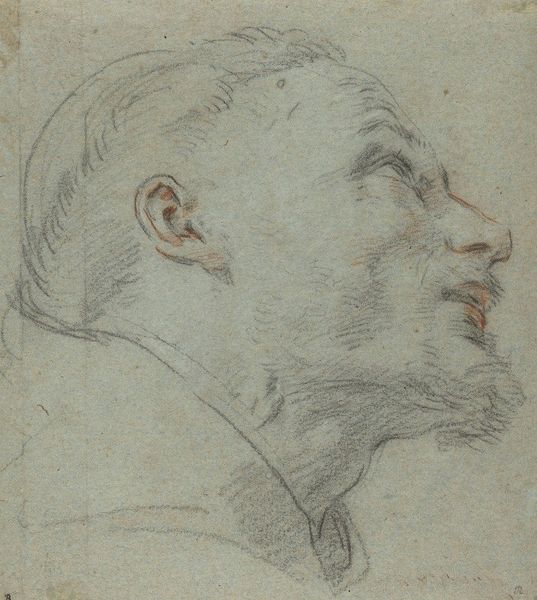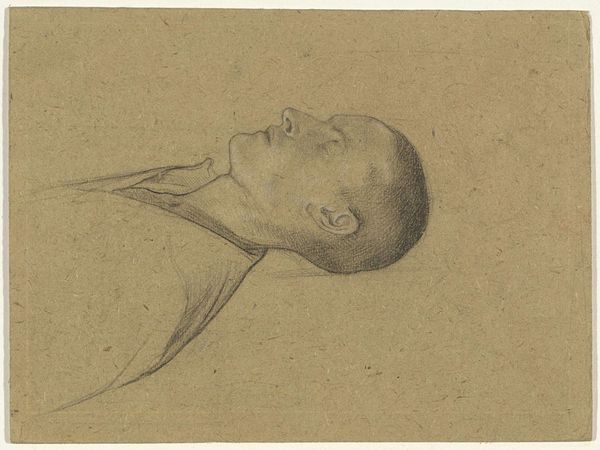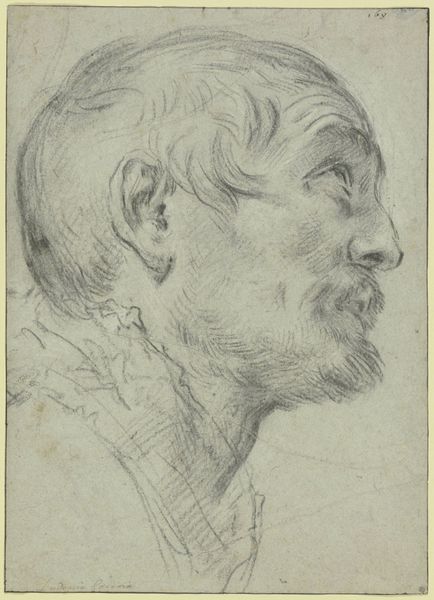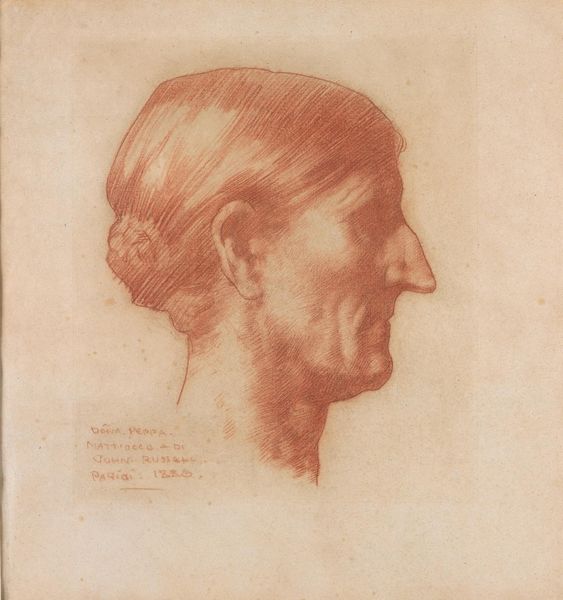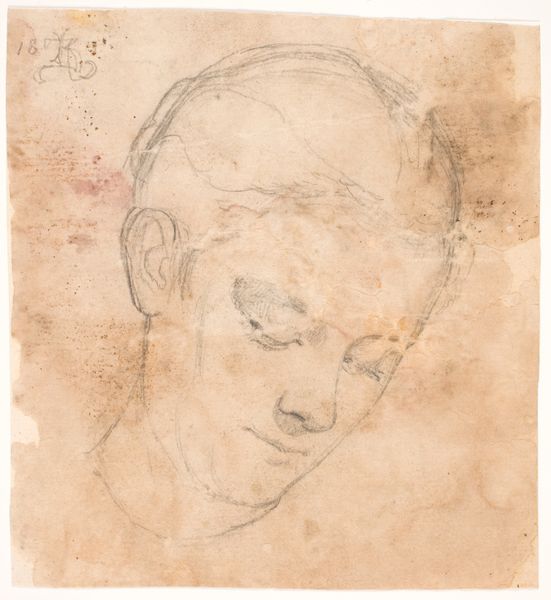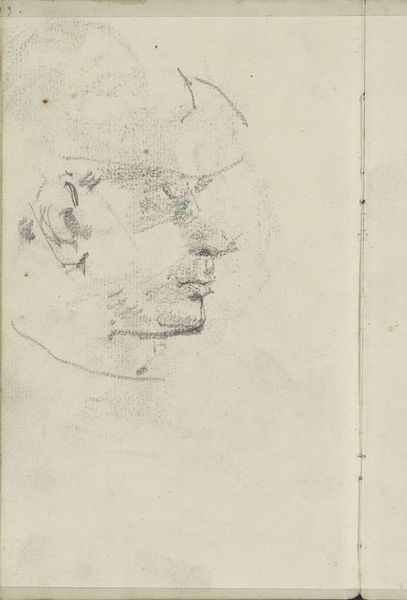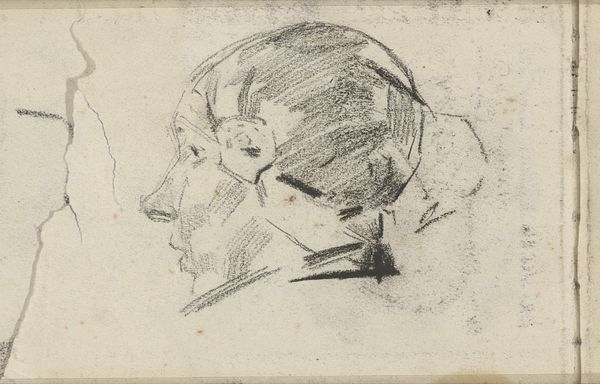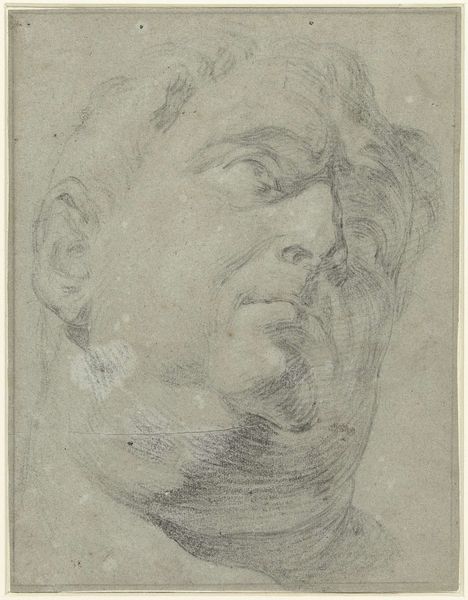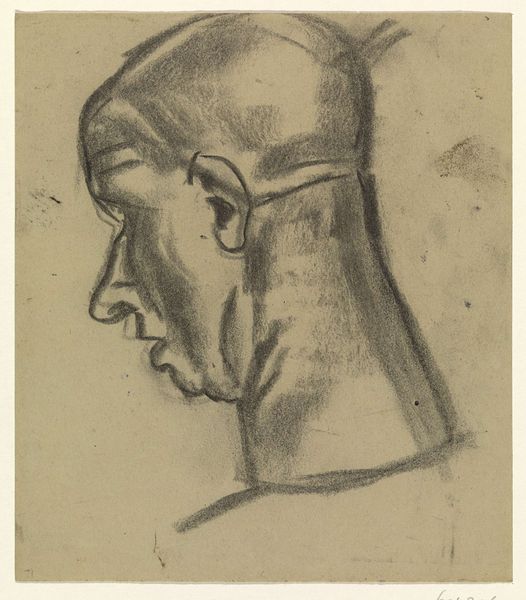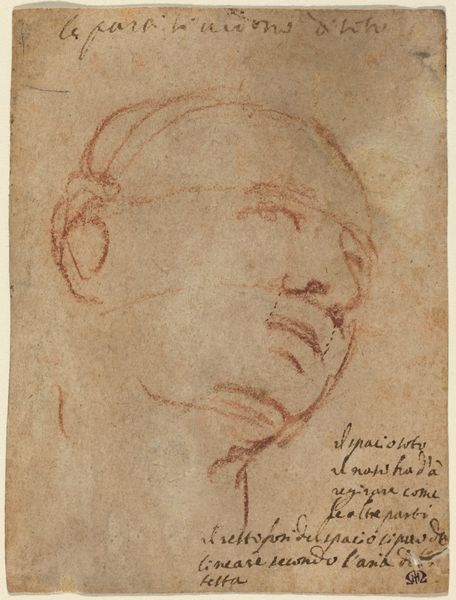
drawing, pencil, charcoal
#
portrait
#
pencil drawn
#
drawing
#
pencil sketch
#
charcoal drawing
#
pencil drawing
#
underpainting
#
romanticism
#
pencil
#
portrait drawing
#
charcoal
#
history-painting
#
academic-art
Dimensions: height 416 mm, width 322 mm
Copyright: Rijks Museum: Open Domain
Curator: Right, let’s delve into this intriguing piece, "Head of a Man Looking Upward, with Downcast Eyes," created by Théodore Géricault between 1801 and 1824. It’s currently housed here at the Rijksmuseum. Editor: My first impression? There’s a melancholic weight to this drawing, isn't there? A kind of heavy resignation etched into the face. The lighting adds to that sense of introspection. Curator: Absolutely, I see that too. Géricault captured a transient vulnerability. What resonates for me is his intense observation, focusing on the raw physicality. It is like he tries to see under the surface of appearances to the essence of feeling. Editor: Which makes sense considering the historical moment. Romanticism often grappled with the burden of human existence, challenging Enlightenment ideals with a focus on subjective emotion. Looking at this from a social perspective, I’m wondering: who was this man? And what position might he have occupied in 19th-century society? Was he part of the disenfranchised? Curator: That’s the beauty of art. Géricault’s academic skill is unquestionable, yet the image defies simple categorisation. It's not merely about portraiture. Consider the sketch-like, almost unfinished quality – the shading under the chin and on the nose for instance – these lend an incredible energy. The lack of embellishment hints at truth. Editor: True. The expressiveness suggests the artist wasn’t necessarily seeking to glorify or idealise this figure. The very downcast eyes subvert the typical power dynamic within portraiture, doesn't it? Also, Géricault does not flatter; that is clear to me, no? There’s almost an awkwardness in the foreshortening. Curator: Exactly. In its way, this drawing is democratic, cutting through social facades. What tools! Pencil and charcoal; nothing grandiose! This approach makes the subject seem universal. I look into that face, and, somehow, I perceive echoes of all human suffering. I cannot help but think that is powerful! Editor: Perhaps this 'ordinary' man becomes a conduit to reflect larger social anxieties. That is an intriguing aspect of art. Géricault presents not a hero but a common man laden with thought – a testament to art’s capacity to democratise feeling and empathy. Food for thought... Curator: Precisely! What initially struck me as quiet desperation perhaps possesses a broader echo of shared suffering across epochs, revealed with simplicity by Géricault.
Comments
No comments
Be the first to comment and join the conversation on the ultimate creative platform.

